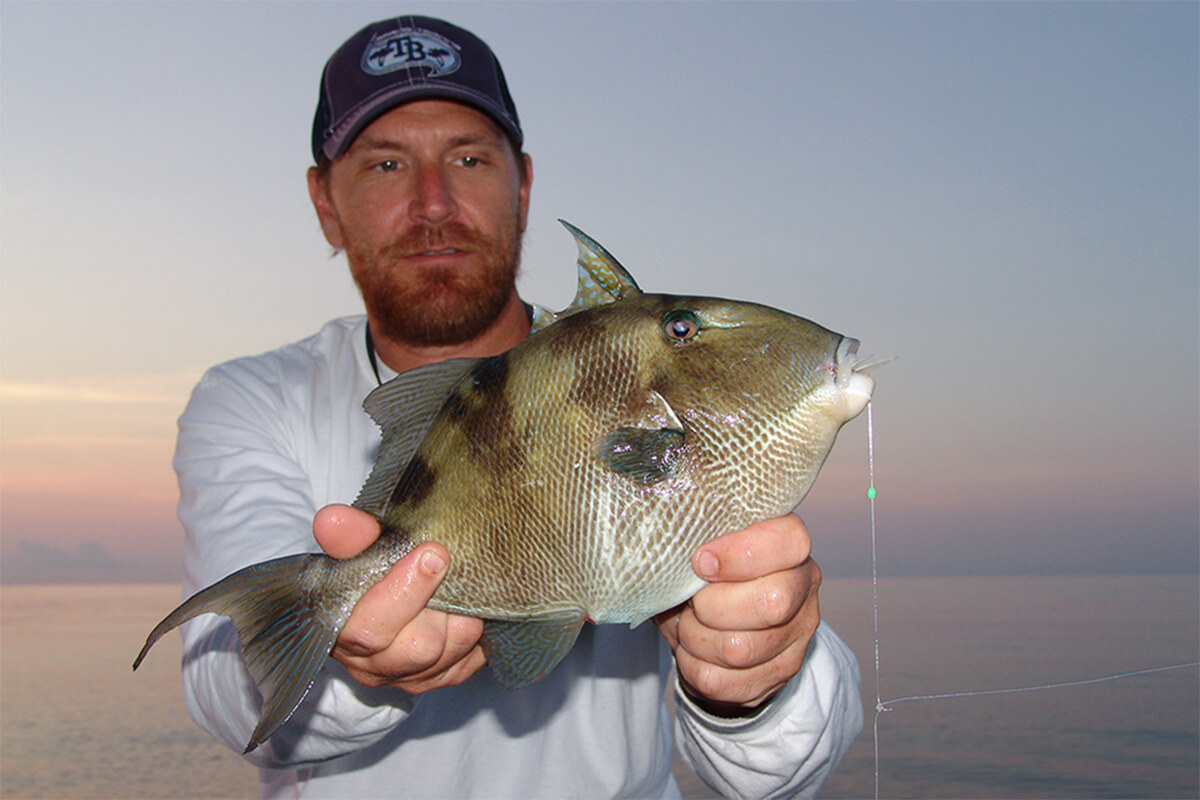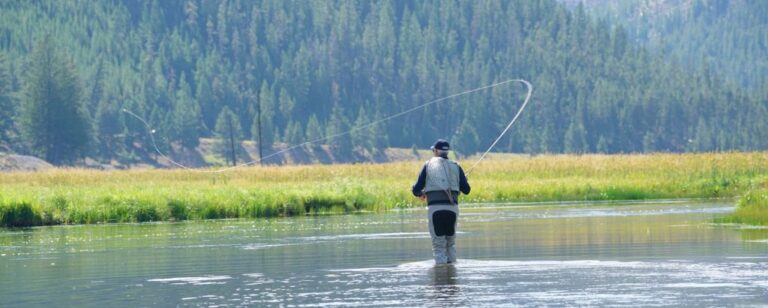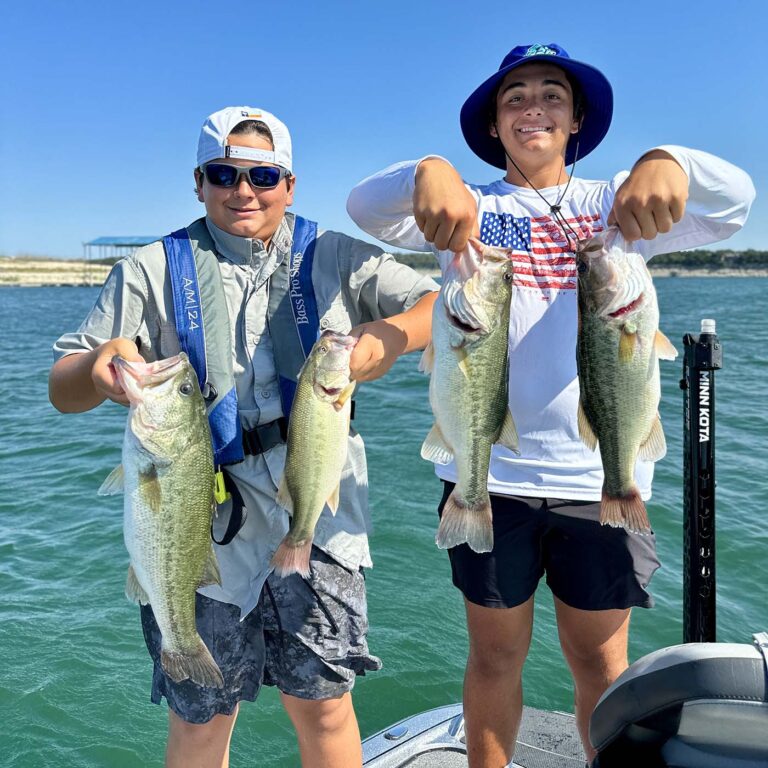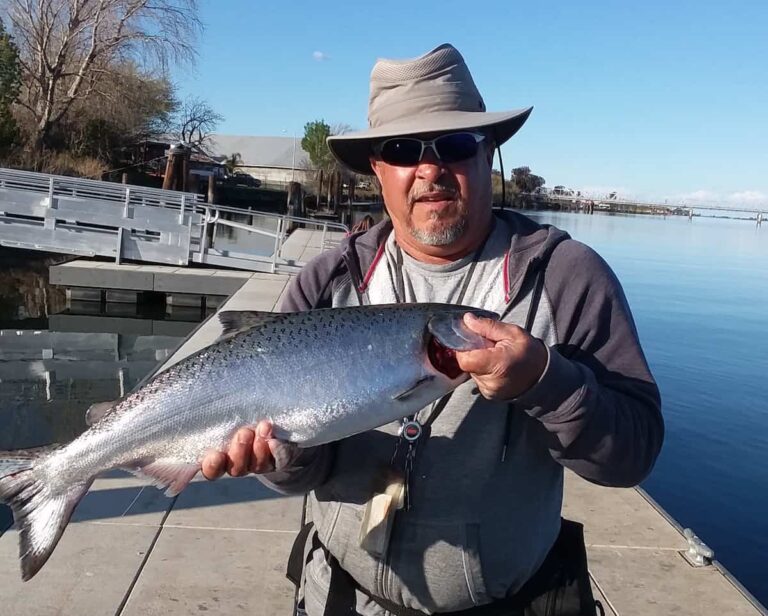To clean old fishing lures, soak them in warm soapy water and scrub gently with a soft brush to remove dirt and debris. Then, rinse thoroughly and dry them completely before storing or using them again.
Cleaning old fishing lures is an important task to maintain their effectiveness and prolong their lifespan. Over time, lures can accumulate dirt, rust, and other debris that can affect their performance. By following these simple steps, you can ensure that your old fishing lures stay in good condition and continue to catch fish for years to come.

Credit: www.floridasportsman.com
Understanding The Importance Of Cleaning Old Fishing Lures
Preserving The Legacy Of Vintage Fishing Tackle
Old fishing lures carry a special charm that transcends time, making them popular among both collectors and anglers. Preserving the legacy of these vintage fishing tackle pieces is crucial to maintain their historical value and the craftsmanship that went into creating them.
By understanding the importance of cleaning old fishing lures, you can ensure that they remain in pristine condition for years to come. Here are a few key points to consider:
- Proper cleaning techniques: Old fishing lures are often made from delicate materials such as wood, metal, or even early plastic. It is essential to use gentle cleaning methods to avoid damaging these fragile components.
- Removing dirt and debris: Over time, old lures can accumulate dirt, rust, or other debris that impairs their appearance and functionality. Regular cleaning helps to remove these contaminants, revealing the lure’s original colors and patterns.
- Preventing corrosion: Metal components on vintage fishing lures are susceptible to corrosion. Cleaning and drying them thoroughly after each use helps to prevent rust from forming and extends the lifespan of the lure.
- Retaining value: Well-maintained vintage fishing lures tend to hold their value better than neglected ones. Regular cleaning not only enhances their physical appearance but also ensures that any potential buyers or collectors will see the lure in its best possible condition.
Enhancing Performance And Durability
In addition to preserving their legacy, cleaning old fishing lures can also have a positive impact on their performance and durability. Here are a few reasons why:
- Restoring action: Dirt and grime can hinder the movement and action of fishing lures, reducing their effectiveness in attracting fish. By cleaning old lures, you can restore their original action, making them more enticing to fish.
- Maintaining hooks: Fishing lures are designed with sharp hooks to ensure successful hook-ups. However, these hooks can become dulled or corroded over time. Regular cleaning helps to keep the hooks sharp and rust-free, maximizing their effectiveness.
- Preventing deterioration: Some vintage fishing lures are made from natural materials like wood or feathers, which can deteriorate over time if not properly cared for. Cleaning these lures helps to prevent decay and ensures their longevity.
- Improving casting distance: A clean fishing lure is more streamlined and free of obstructions, allowing for smoother casts and increased casting distance. This can be particularly beneficial when targeting fish in deeper waters or areas with strong currents.
Maximizing The Attractiveness Of Lures
Old fishing lures often feature vibrant colors, unique designs, and intricate details that make them highly attractive to fish. Cleaning these lures not only enhances their appearance but also maximizes their attractiveness, increasing your chances of hooking a fish. Consider the following points:
- Removing algae and debris: Over time, lures can accumulate algae, weeds, or other natural debris that detract from their appeal. By cleaning these elements off the lure’s surface, you can restore its visual appeal and improve its fish-attracting capabilities.
- Rejuvenating paint and finishes: The paint and finishes on vintage fishing lures may fade or become damaged due to age and exposure to the elements. Gentle cleaning can help revitalize the colors, making them more vibrant and eye-catching to fish.
- Restoring reflectivity: Lures with reflective surfaces, such as metal spoons or spinners, rely on their ability to reflect light and mimic the movements of a real prey. Regular cleaning ensures that these surfaces remain free of dirt or oxidation, maximizing their reflective properties.
Understanding the importance of cleaning old fishing lures goes beyond aesthetics. It helps preserve their legacy, enhances their performance and durability, and maximizes their attractiveness to fish. By adopting proper cleaning practices, you can enjoy the beauty and functionality of these vintage treasures for years to come.
Tools And Materials You’Ll Need
Old fishing lures can hold sentimental value and have a unique charm that attracts anglers and collectors alike. However, over time, these lures can become dirty, rusty, and lose their appeal. If you have some old fishing lures that need a little tlc, don’t worry.
With a few simple tools and materials, you can bring these lures back to their former glory. Here are the essential tools and materials you’ll need to clean old fishing lures.
Soft Bristle Brushes
- Soft bristle brushes are gentle enough to remove dirt and grime from the lure’s surface without causing any damage.
- They come in various sizes and shapes, making it easier to clean different parts of the lure, including hooks and crevices.
- Using a soft bristle brush ensures that you can effectively clean the lure without scratching or scuffing its finish.
Mild Soap Or Detergent
- A mild soap or detergent is essential for cleaning the lure and removing any stubborn dirt or residue.
- Make sure to choose a soap or detergent that is gentle and non-abrasive to avoid damaging the lure’s paint or finish.
- Dilute the soap or detergent in water according to the instructions and use it to scrub the lure gently.
Toothpicks Or Wooden Sticks
- Toothpicks or wooden sticks are handy tools for removing debris and cleaning small crevices or tight spots on the lure.
- They can be used to dislodge dirt, rust, or other stuck-on particles without causing any harm to the lure.
- Carefully maneuver the toothpick or wooden stick in hard-to-reach areas to ensure a thorough cleaning.
Microfiber Cloth
- A microfiber cloth is an excellent tool for drying the lure and wiping away any remaining moisture or residue.
- Microfiber is highly absorbent and soft, making it ideal for delicate surfaces and preventing scratches or marks.
- Gently pat the lure dry with the microfiber cloth to avoid any potential damage.
Rust Remover
- If your old fishing lures have visible rust, a rust remover can help restore their original appearance.
- Look for a rust remover specifically designed for fishing gear to ensure optimal results.
- Follow the instructions on the rust remover product and apply it carefully to the rusty areas of the lure. Allow it to sit for the recommended time before cleaning it off.
Lubricants And Protective Coatings
- After cleaning and drying the lure, apply a lubricant to the hooks and moving parts to ensure smooth operation.
- Additionally, consider using a protective coating, such as a clear sealant or wax, to safeguard the lure’s finish from future damage.
- Check the manufacturer’s recommendations for suitable lubricants and coatings for your specific lure materials.
By gathering these essential tools and materials, you’ll be fully equipped to clean your old fishing lures effectively. Remember to take your time and handle the lures with care to preserve their value and beauty. With a bit of patience and the right approach, you can transform your old fishing lures into eye-catching pieces that are ready to hit the water again.
Step-By-Step Guide To Restoring Old Fishing Lures
If you’re a fishing enthusiast, you probably have some old fishing lures lying around that could use some tlc. Restoring old lures not only brings them back to their former glory but also ensures their functionality. In this step-by-step guide, we’ll walk you through the process of cleaning, repairing, and rejuvenating your old fishing lures.
Assessing The Condition Of The Lure
Before diving into the restoration process, it’s important to assess the condition of the lure. This will help you determine the extent of the cleaning and repairs needed. Here are a few aspects to consider:
- Checking for rust, corrosion, and damage: Look for any signs of rust, corrosion, or physical damage to the lure. These issues can affect both the appearance and functionality of the lure.
- Evaluating paint and decal condition: Examine the paint and decals on the lure. Are they intact, faded, or peeling? This evaluation will help you decide whether to strip and repaint the lure or find suitable replacements.
Cleaning The Lure
To start the restoration process, you need to clean the lure thoroughly. Here’s how:
- Removing dirt and debris: Gently brush away any dirt, dust, or debris from the lure’s surface. This will reveal its true condition and make further cleaning easier.
- Using gentle cleaning solutions: Depending on the material of the lure, use a mild soap or detergent solution to remove grime and stains. Avoid harsh chemicals that may damage the lure.
- Carefully handling fragile components: Pay extra attention when cleaning delicate components like feathers or soft plastic tails. Use a soft brush or cloth to clean these areas gently.
Removing Rust And Corrosion
If your lure has rust or corrosion, it’s important to address these issues before proceeding with the restoration. Follow these steps:
- Applying rust remover: Use a rust remover specifically designed for fishing lures. Apply it carefully to the affected areas, following the manufacturer’s instructions.
- Using toothpicks or wooden sticks for detailing: For intricate parts or hard-to-reach spots, use toothpicks or wooden sticks to apply the rust remover or gently scrape off rust and corrosion.
- Protecting hooks and metal parts: To prevent further rusting, consider applying a rust inhibitor or protective coating to the hooks and metal components of the lure.
Restoring The Paint And Decals
Next, it’s time to restore the paint and decals on your old fishing lure. Here’s how:
- Stripping old paint and decals: If the existing paint or decals are in poor condition, carefully remove them using a paint stripper or by sanding. Be cautious not to damage the lure’s body.
- Applying new paint and clear coats: After stripping off the old paint, choose suitable colors and recreate the lure’s original design. Apply multiple thin coats of paint, allowing each coat to dry before proceeding. Finish with a clear coat for added durability.
- Sourcing authentic decals and replacements: If the lure initially had decals, try to find authentic replacements to maintain its originality. You can search for vintage fishing lure forums or specialized online stores for suitable options.
Lubricating And Protecting The Lure
To ensure the longevity of your restored lure, proper lubrication and protection are essential. Follow these steps:
- Choosing the right lubricant: Apply a small amount of fishing reel grease or oil to the lure’s hinges, joints, and moving parts. This will prevent corrosion and keep the lure functioning smoothly.
- Applying protective coatings: Consider applying a clear protective coating to the entire lure after the restoration process. This will help shield it from future environmental damage.
Properly Storing The Revitalized Lure
Once your old fishing lure is revitalized, it’s important to store it properly to maintain its condition:
- Place the lure in a clean and dry storage container or tackle box.
- Use separate compartments or dividers to prevent the lures from tangling or scratching each other.
- Store the container in a cool and dry place away from direct sunlight or extreme temperatures.
By following this step-by-step guide, you can breathe new life into your old fishing lures and continue to enjoy using them on your fishing adventures. Happy restoring!
Expert Tips For Effective Lure Restoration
Old fishing lures can hold sentimental value and be collectors’ items. However, after years of use and exposure to the elements, these lures can lose their luster. If you’re looking to restore the old fishing lures in your collection, it’s important to approach the process with care and attention to detail.
In this section, we will explore expert tips for effective lure restoration, focusing on researching the lure’s history and original look, seeking professional advice or assessments, and handling lures with care to avoid damage.
Researching The Lure’S History And Original Look
When embarking on the restoration journey for old fishing lures, it’s essential to gather as much information as possible about the lure’s history and original appearance. Here are a few key points to consider:
- Conduct online research or consult reference books to identify the lure’s manufacturer, model, and approximate age.
- Examine old catalogs or advertisements from the manufacturer to get a better understanding of how the lure was originally designed and colored.
- Look for any distinct markings, stamps, or labels on the lure itself, as they can provide valuable clues about its origin and any unique features.
- Compare your lure to images of similar ones to determine if any modifications or alterations have been made over time.
Seeking Professional Advice Or Assessments
If you’re unsure about the best approach to restore your old fishing lure or if you believe it may be of significant value, it’s wise to seek professional advice. Here’s what you should keep in mind:
- Look for reputable lure experts, antique dealers, or fishing tackle collectors who can offer insights and guidance specific to your lure.
- Arrange for an assessment of the lure’s condition and potential value by someone experienced in evaluating antique fishing tackle.
- Consider reaching out to local fishing clubs or online communities specializing in vintage fishing gear. They may be able to connect you with knowledgeable individuals who can provide helpful recommendations.
- Be open to the possibility that a professional restoration may be necessary to achieve the best results while preserving the lure’s authenticity and value.
Handling Lures With Care To Avoid Damage
When handling and cleaning old fishing lures, it’s crucial to take precautions to avoid causing any further damage. Follow these tips to ensure a safe restoration process:
- Wear soft cotton gloves to protect the lure from oils and acids naturally present on your hands, preventing additional corrosion or discoloration.
- Use a soft-bristled brush or toothbrush to gently remove dirt, debris, and rust from the lure’s surface. Be cautious not to scrub too vigorously, as this may scratch or chip the paint or other delicate parts.
- Avoid harsh chemicals or abrasive cleaners that may cause irreparable damage. Instead, opt for mild dish soap diluted in warm water to cleanse the lure.
- Rinse the lure thoroughly using clean water and pat it dry with a soft, lint-free cloth to prevent water spots.
- Store the restored lure in a suitable case or display box, away from direct sunlight and extreme temperature fluctuations, to maintain its condition for years to come.
By researching the lure’s history, seeking professional advice, and handling the lures with care, you can effectively restore old fishing lures while preserving their unique characteristics and retaining their value. Happy restoring!
Frequently Asked Questions (Faqs) About Restoring Old Fishing Lures
Ah, the thrill of fishing! There’s nothing quite like the anticipation of casting your line and reeling in a big catch. But what about those old fishing lures that have been gathering dust in the tackle box for years? If you’re wondering how to bring them back to life, you’ve come to the right place.
In this section, we’ll address some common questions about restoring old fishing lures. Let’s dive in!
How Often Should I Clean My Old Fishing Lures?
Keeping your old fishing lures clean is essential to prolonging their lifespan and effectiveness. Here are the key points to consider:
- Clean your old fishing lures after each use to remove any dirt, debris, or fish scent that may have accumulated.
- Regular cleaning helps prevent rust and corrosion, which can damage the lure’s appearance and performance.
- If you store your lures for an extended period, it’s a good idea to give them a thorough cleaning before putting them away.
Can I Use Household Cleaning Products To Restore My Lures?
Using household cleaning products to restore old fishing lures can be an option, but it’s crucial to choose the right products and methods. Here’s what you need to know:
- Avoid using harsh chemicals or abrasive cleaners that can damage the lure’s finish or paint.
- Mild dish soap mixed with warm water is often sufficient for removing dirt and grime.
- For stubborn stains or discoloration, consider using specialized lure cleaners or gentle rubbing alcohol.
- Always test the cleaning product on a small, inconspicuous area of the lure before applying it to the entire surface.
Should I Repair Or Replace Damaged Components?
When it comes to damaged components on old fishing lures, you have two options: repair or replace. Consider the following:
- If a hook is bent or rusted, you can often straighten it using pliers or replace it with a new hook of the same size.
- Damaged split rings can also be replaced with new ones to ensure proper lure functionality.
- For cracked or damaged bodies, you may be able to repair them using epoxy or a fishing lure repair kit.
- However, if the damage is extensive or irreparable, it’s best to replace the lure altogether to maintain its effectiveness in the water.
Remember, the goal of restoring old fishing lures is to preserve their functionality and appearance. By following these guidelines and exercising caution, you can bring new life to your treasured collection. Happy fishing!
Conclusion: Bringing New Life To Old Fishing Lures
Old fishing lures hold a special place in the hearts of anglers. These timeless treasures are not just tools for catching fish; they are vessels of memories and stories, reflecting the experiences of passionate fishermen. Cleaning and restoring old fishing lures not only brings them back to life but also revitalizes the memories and stories they hold.
In this section, we will explore the importance of preserving fishing history, the joy of breathing new life into old lures, and the rewards of restoring these nostalgic pieces.
Revitalizing Memories And Stories
- Restoring old fishing lures allows anglers to reconnect with their past fishing adventures and relive the memories associated with each lure. It’s like taking a trip down memory lane, reminiscing about the big catch or the one that got away.
- Each old lure has a story to tell, whether it’s about the person who originally owned it, passed it down through generations, or the memorable fishing trips where it proved its worth. Cleaning and restoring these lures help preserve these stories for future generations.
- The act of cleaning old fishing lures also serves as a therapeutic activity, allowing anglers to spend quality time reflecting on cherished memories and the joy of being out on the water. It’s a chance to slow down, disconnect from the digital world, and reconnect with the fishing heritage.
Preserving Fishing History
- Old fishing lures are not just artifacts; they are a piece of fishing history. They showcase the evolution of fishing tackle over the years, reflecting the ingenuity and craftsmanship of the past.
- By cleaning and restoring old lures, anglers contribute to preserving this fishing history. They ensure that these valuable pieces of angling heritage are not forgotten and maintain their value as collectibles.
- Restoring old fishing lures can also lead to the discovery of rare and unique pieces that are no longer in production. This further adds to the historical significance of these lures and provides an opportunity for collectors and enthusiasts to appreciate their rarity and craftsmanship.
Enjoying The Rewards Of Restored Lures
- Cleaning and restoring old fishing lures isn’t just about preserving history; it’s also about reaping the rewards of a job well done. Once the lures are restored to their former glory, anglers can once again use them for fishing.
- Restored lures often have a charm and character that modern lures lack. They possess an aura of authenticity that can entice even the most finicky fish. Using these lures allows anglers to experience the thrill of fishing with a piece of angling history and connect with the tradition of the sport.
- Furthermore, restored lures can be a source of pride and accomplishment. The satisfaction of bringing a worn-out lure back to life and witnessing it perform as intended is truly fulfilling. It showcases the angler’s dedication to the art of fishing and their commitment to preserving the legacy of old fishing lures.
Cleaning and restoring old fishing lures not only rejuvenates these nostalgic treasures but also allows anglers to relive memories, preserve fishing history, and enjoy the rewards of using these restored pieces. By embracing the art of restoring old lures, anglers can blend the past, present, and future of fishing, creating an enriching and meaningful angling experience.
Conclusion
Cleaning old fishing lures is a necessary step to ensure their longevity and effectiveness. By following the tips and techniques outlined in this blog post, you can effectively remove dirt, debris, and rust from your lures, restoring their appearance and performance.
Remember to use gentle cleaning methods and avoid harsh chemicals that could damage the lure’s paint or finish. Take the time to inspect each lure for any signs of damage or wear, addressing any issues before use. Regularly cleaning and maintaining your fishing lures not only keeps them looking their best, but also allows you to get the most out of your fishing experience.
So, don’t neglect this crucial aspect of fishing gear maintenance and enjoy the benefits of having clean and reliable lures in your tackle box. Happy fishing!





